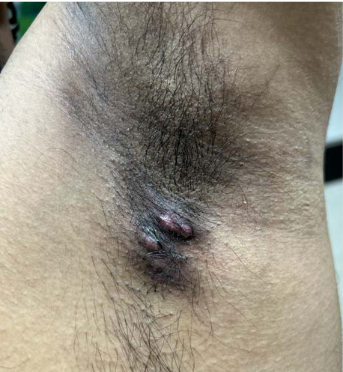The prevalence of Hidradenitis Suppurativa
There is wide variation in incidence and prevalence figures available from HS epidemiology studies performed prior to the Global Hidradenitis Suppurativa Atlas (GHiSA) initiative, which was one of the drivers for conducting a unified global prevalence study. Prevalence estimates have varied from 0.05% to 4.1%, representing an 82-fold difference. Estimates at the lower end of the range tend to be provided by insurance-based routinely collected data sources. Insurance data from the USA provided the prevalence figure of 0.05% in a study from 2007. The figure is likely to underestimate true HS prevalence, due to intrinsic issues with insurance data, including the exclusion of uninsured patients. This should be seen in the context that HS tends to have a higher prevalence in people in lower socioeconomic groups, who are less likely to have medical insurance.
All routinely collected data sources rely on accurate disease recognition and clinical coding. As a result, undiagnosed cases of HS are missed, and this is very relevant in the context of the 7-10-year average diagnostic delay. A primary care database study from the UK found an HS prevalence of 0.54% in diagnosed patients, which increased to 0.77% with the inclusion of validated undiagnosed cases with a history of multiple attendances for flexural skin boils. So, one-third of the estimated prevalence was undiagnosed cases. With the inclusion of probable cases with a documented history of 1-4 flexural skin boils, the UK prevalence was 1.19%.

Figure: Typical HS lesion
Questionnaire-based studies from mainland Europe tend to produce higher prevalence figures. A cross-sectional study of 10,000 members of the French population, with a 69% response rate, provided a one-year period prevalence of 0.97% based on responses to a survey question about painful flexural boils. A Danish survey of more than 30,000 adults aged 30 years and older in the general population made use of two validated survey questions about skin boils and found a prevalence of 2.1%.
The highest prevalence estimates have been obtained from in-person review of predominantly young adults. For example, a study of those undergoing screening for sexually transmitted diseases provided a figure of 4.1%. While the demographics of the study population may increase the prevalence estimate, in-person examination by a dermatologist is the gold standard method for HS diagnosis in the context that it remains a clinical diagnosis.
While much of the difference in prevalence figures may reflect the differing methodologies employed, it remains uncertain to what extent they are underpinned by the ethnicities of the populations studied. Prevalence is three times higher in African Americans compared to White individuals from the USA, which means that the lower overall prevalence figures in the USA compared to Europe are more likely due to the sampling method rather than ethnicity. Nevertheless, reversal of the female: male ratio in Asian HS populations, with higher prevalence in Asian males, suggests that ethnic differences may produce different prevalence figures in different parts of the world. Insurance data from South Korea gave a 10-year prevalence of 0.06%, while a validated screening questionnaire gave a prevalence of 0.67% in the Australian population.

